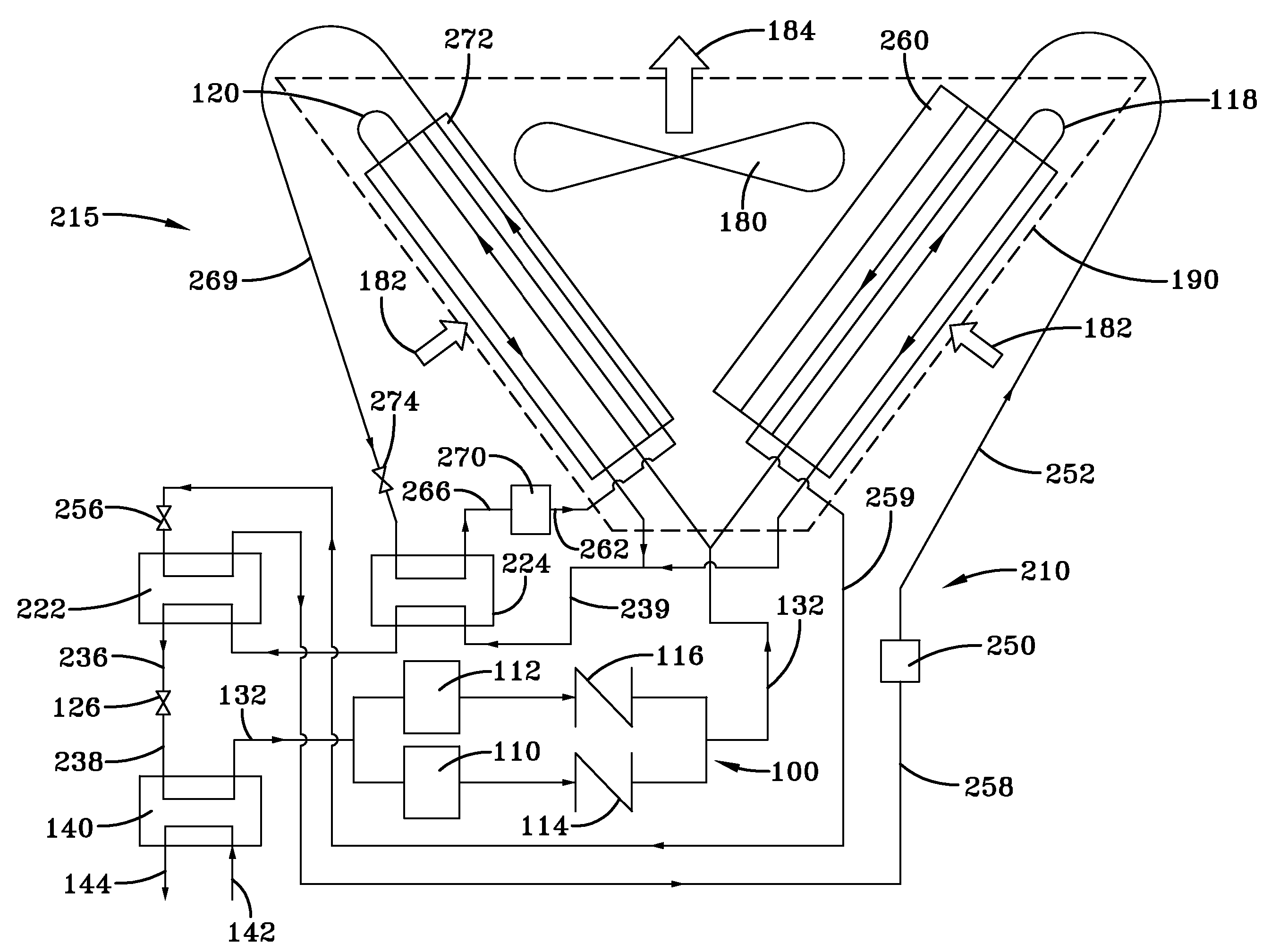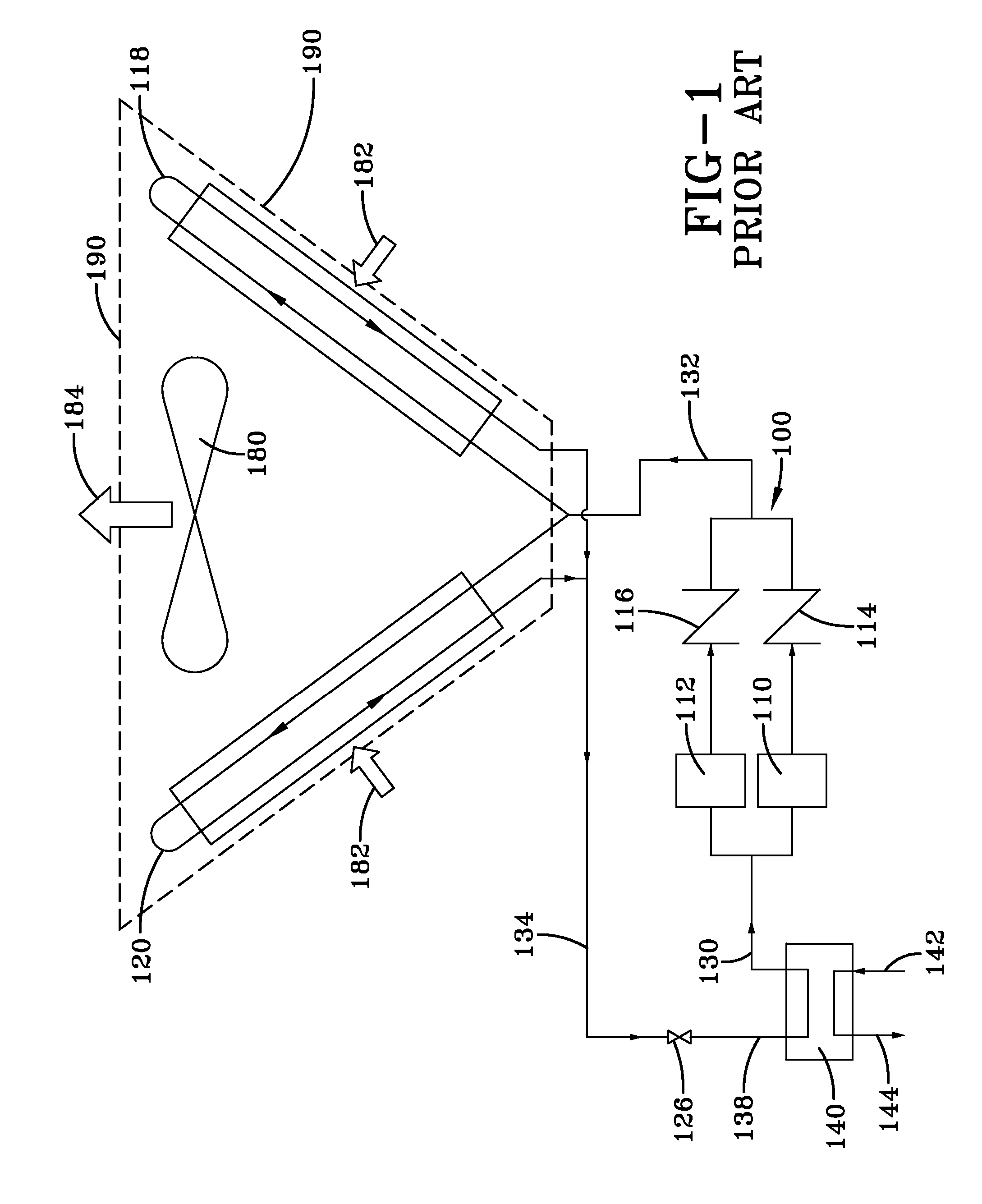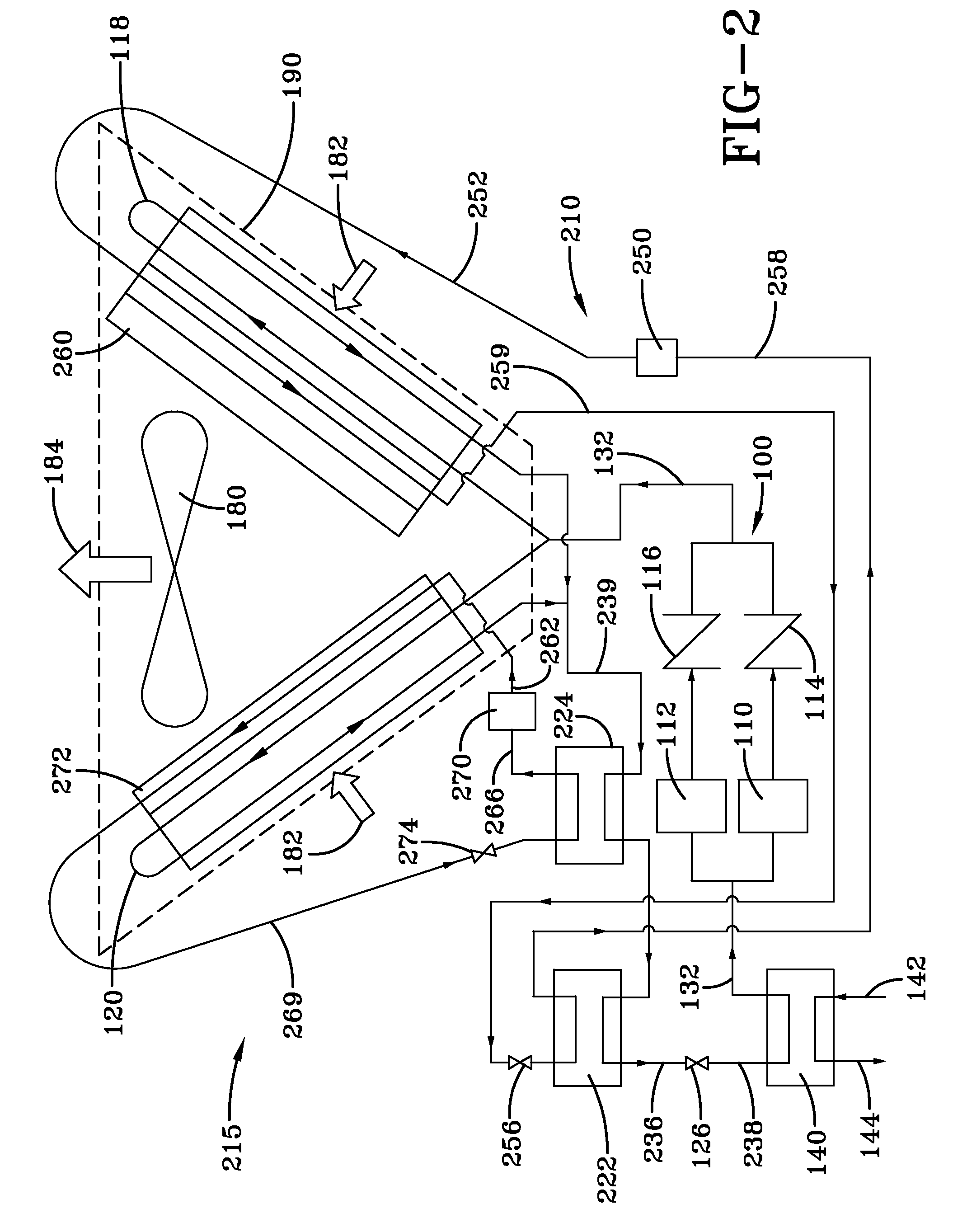HVAC system with powered subcooler
a subcooler and hvac technology, applied in the field of hvac systems, can solve the problems of limited compressor efficiency, compressor loss, general inability to fully realize the theoretical benefit of the economizer cycle, etc., and achieve the effects of increasing efficiency, increasing efficiency, and increasing capacity
- Summary
- Abstract
- Description
- Claims
- Application Information
AI Technical Summary
Benefits of technology
Problems solved by technology
Method used
Image
Examples
example 1
[0048] Example 1 is an embodiment of the present invention, as shown in FIG. 2. The first and second subcoolers 222 and 224 provide subcooling to the refrigerant in the main circuit 100 leaving the condenser 190. Example 1 provides an operating condition that has an evaporating temperature of about 38.7° F. (3.7° C.), which is below the evaporating temperature of Comparative However, the condensing temperature is about 120.3° F. (49.0° C.). The subcooling of the liquid refrigerant leaving the condenser 190 in the main circuit 100 permits the increase in cooling capacity of 25.0% and an efficiency increase of 5.5%. The increase capacity and efficiency permit the fabrication of smaller evaporators and / or the fabrication of smaller condenser units for the same cooling loads.
example 2
[0049] Example 2 is an embodiment of the present invention, as shown in FIG. 2 wherein the system utilizes a larger evaporator than in Example 1. The surface area of the evaporator for the main circuit is increased roughly in proportion to the increase in cooling capacity so as to maintain approximately the same evaporating temperature. The increased size corresponds to the increased capacity that is achieved by subcooling the refrigerant in the main circuit 100. Example 1 provides an operating condition that has an evaporating temperature of about 39.7° F. (4.3° C.). However, the condensing temperature is about 120.7° F. (49.3° C.). The subcooler with larger cooler permits the increase in cooling capacity of 26.8% and an efficiency increase of 6.8%.
[0050] Capacity and Efficiency calculations in Table 2 were based upon the water chiller operating at standard conditions (95° F. ambient temperature, 44° F. leaving water temperature).
[0051] In an alternate embodiment, brine may be uti...
PUM
 Login to View More
Login to View More Abstract
Description
Claims
Application Information
 Login to View More
Login to View More - R&D
- Intellectual Property
- Life Sciences
- Materials
- Tech Scout
- Unparalleled Data Quality
- Higher Quality Content
- 60% Fewer Hallucinations
Browse by: Latest US Patents, China's latest patents, Technical Efficacy Thesaurus, Application Domain, Technology Topic, Popular Technical Reports.
© 2025 PatSnap. All rights reserved.Legal|Privacy policy|Modern Slavery Act Transparency Statement|Sitemap|About US| Contact US: help@patsnap.com



